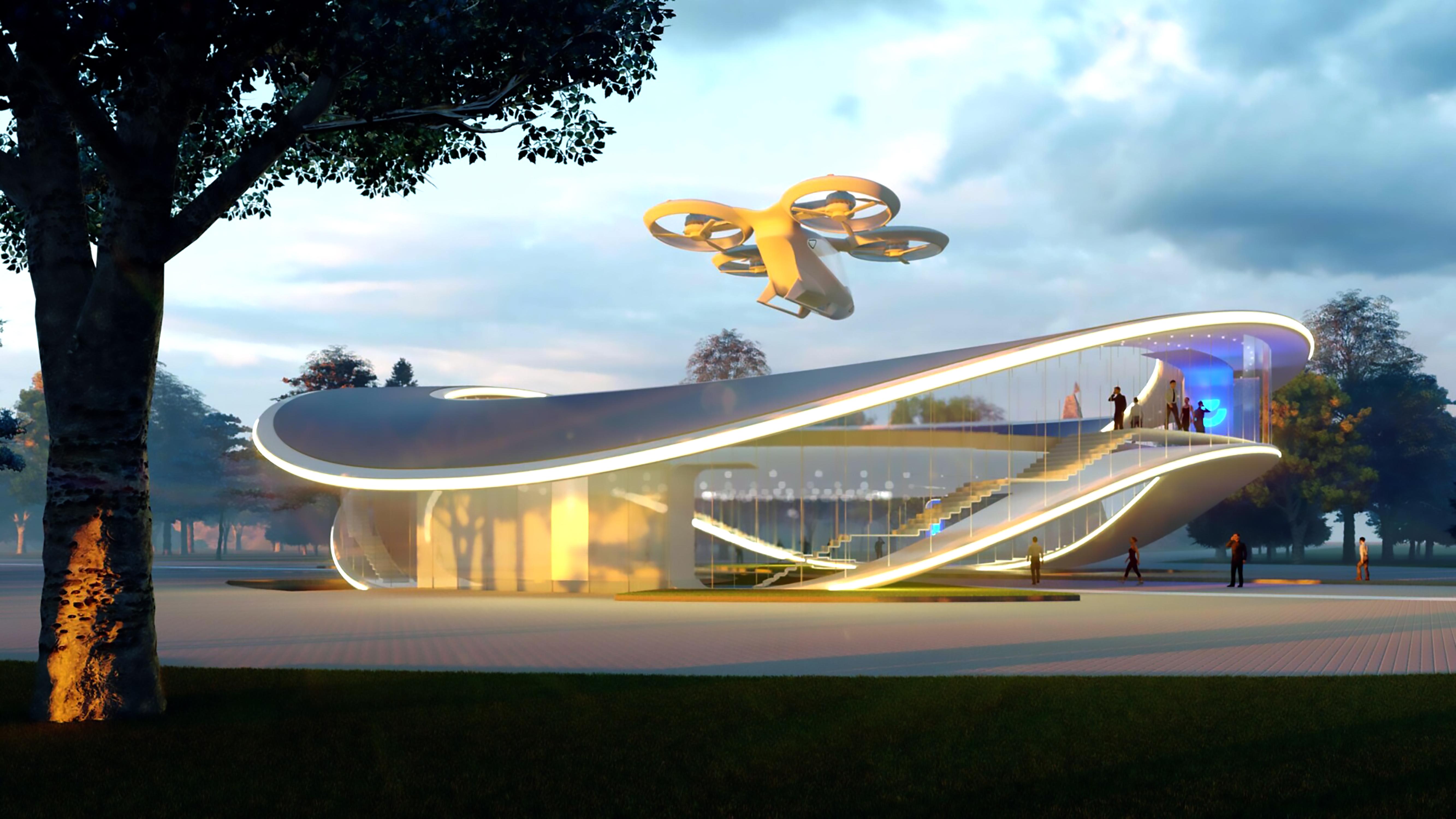01
Time flies by
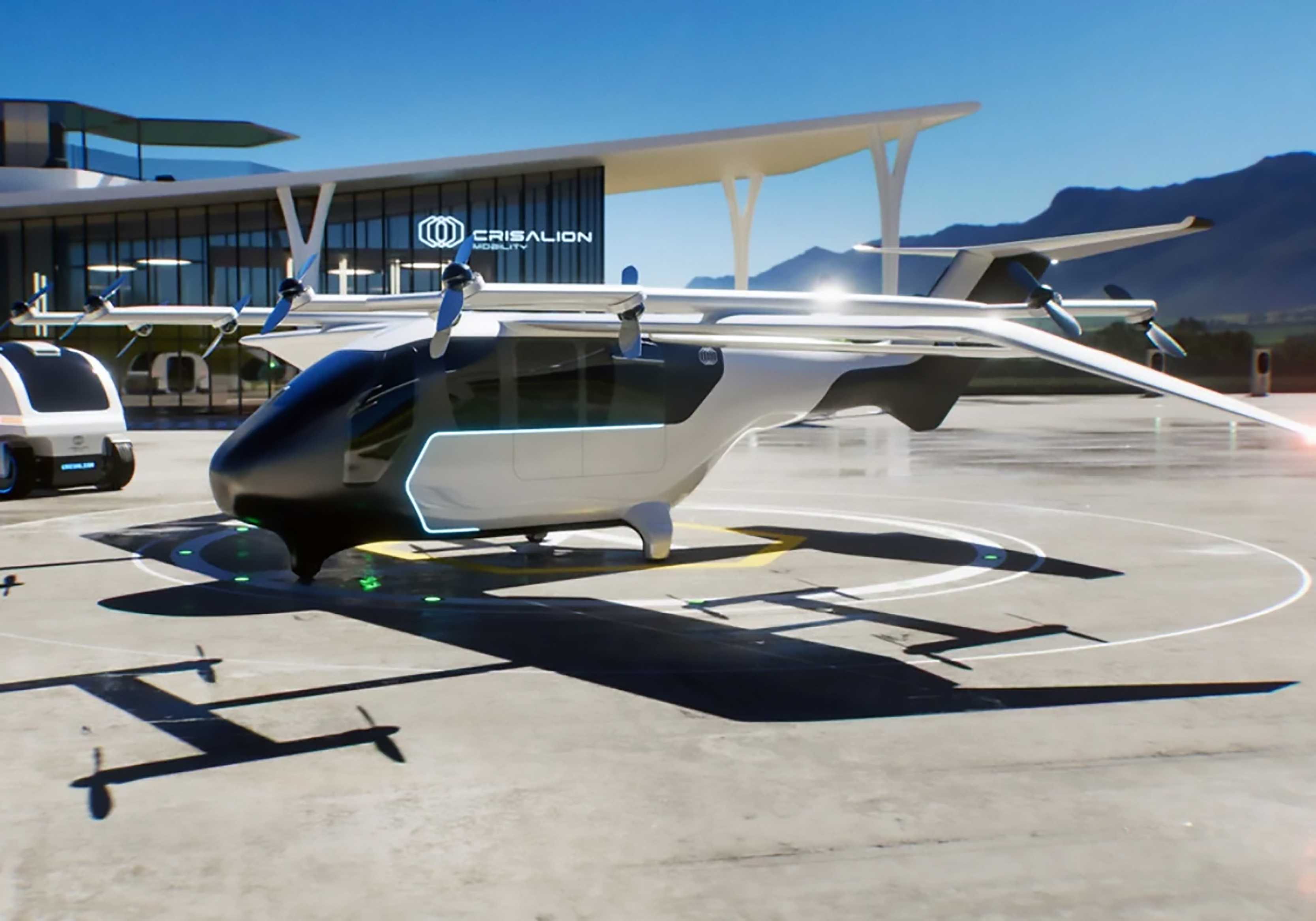
In his book "Today and tomorrow", published in 1926, the industrialist Henry Ford rightly predicted (with 15 million Ford T's sold at that time) that "automobiles will force build roads". In other words, it is the vehicle first and then the infrastructure.
A century later, with the development of the automobile, railways and aviation, a paradigm shift in transport is looming. Technological advances in recent decades (robotics, materials, digital capabilities, satellite positioning systems, among others) have made possible a new type of vehicle, combining some elements of the previous ones in a completely new way.
Thus, although they fly, they are not aeroplanes or helicopters. Although they will carry passengers, they will not be trains, cars or buses. They will be able to deliver goods door-to-door, but they will not be trucks or vans. They will not have to suffer from traffic jams and will not generate annoying emissions or noise, as they are powered by the latest generation of improved electric or hybrid systems.
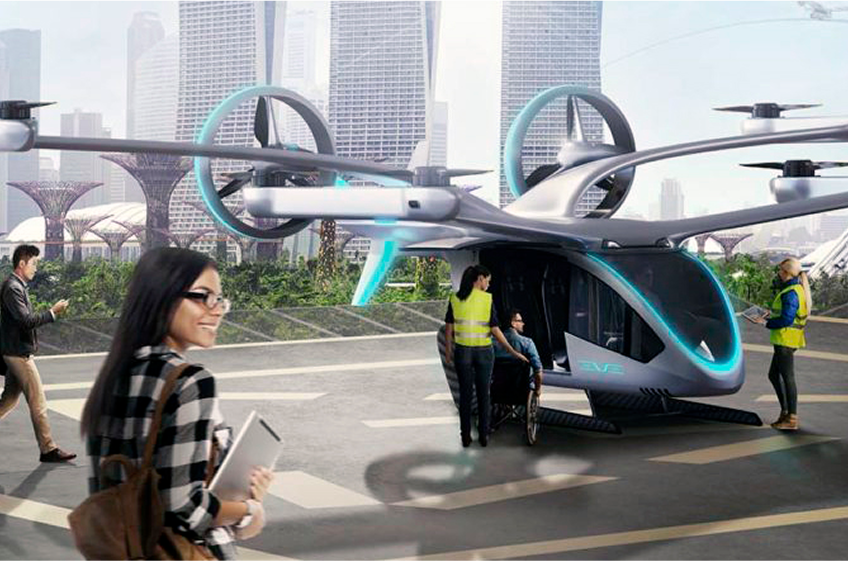
They are drones, unmanned aircraft with vertical take-off and landing capability or VCA (VTOL, vertical take-off and landing - Capable Aircraft), and they are already here. The next step is to define and build the infrastructures from which they will operate, called vertiports, while reorganising the airspace to accommodate them with maximum safety.
Vertiports are the key to realising the concept of innovative (or advanced) air mobility, which is expected to be the next transport revolution. In cities, where more and more people live (currently 55% of the world's population, rising to 68% by 2050, according to UN forecasts) but also for rural, remote or land-locked areas.
With the number of people living in urban areas increasing by around 3% every decade, transport in these areas is expected to become even more complicated in the future. International Civil Aviation Organisation, 2024
More people mean more movements and therefore more congestion, which lengthens journey times, with the consequent increase in economic and environmental costs. Something that could literally be solved by flying: According to EASA, the European Aviation Safety Agency, an air taxi will take 15 to 40 minutes less on average for a standard urban journey, and a cargo drone 70% less for deliveries of medical supplies or goods.
It is a totally new sector in which industry, operators and aviation authorities face multiple challenges and where everything remains to be done. Ineco has therefore promoted the creation, in 2024, of the first association of the sector in Spain, the SIAM cluster (Spanish Innovative Air Mobility), which at the end of January presented the White Paper on Vertiports, at a conference held at Ineco's headquarters in Madrid.
The document, more than a technical manual or a strategic roadmap, defines itself as "a plan to transform how we live and move". It is designed to "facilitate the understanding and development of vertiports (...) by combining technical, regulatory and strategic analysis with a practical perspective".

SIAM was formally constituted as a non-profit association in January 2024. Ineco is a founding partner, with ITG (Instituto Tecnológico de Galicia) and Expodrónica. NTT Data and Pinsent Masons, as constituent partners. Photos: Ineco
¿Why Ineco?
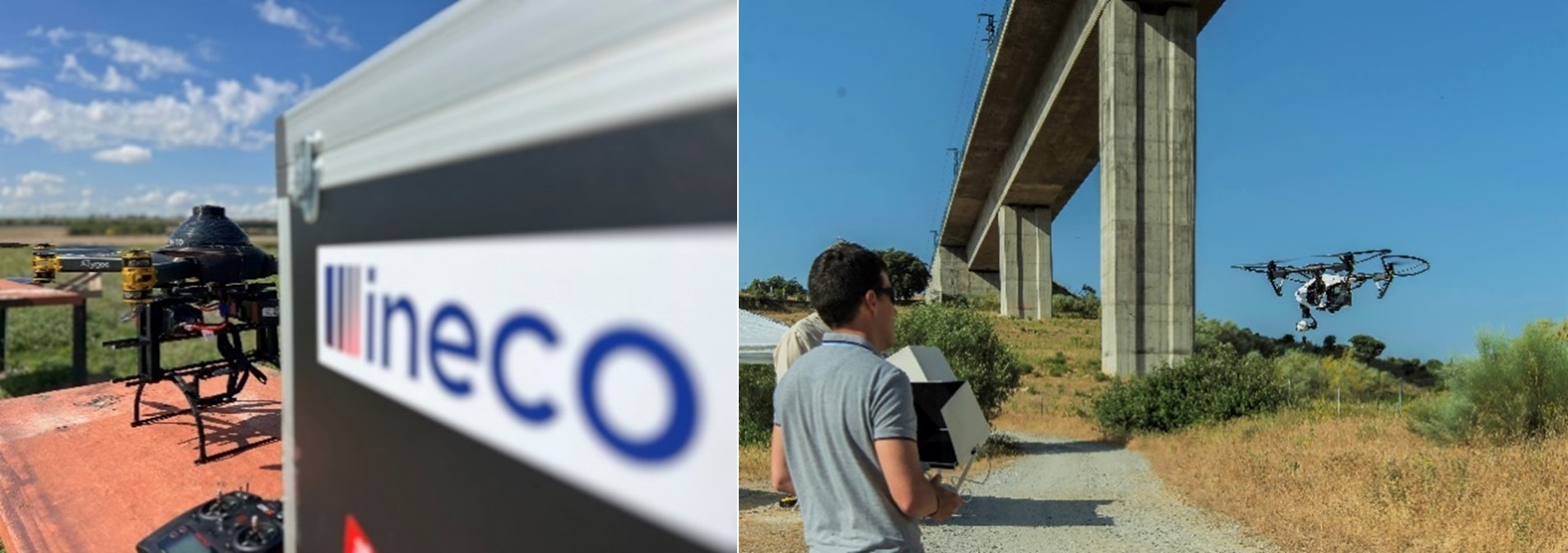
Photos: Ineco
Ineco, which has a track record of more than 30 years in all types of work in airports and air navigation in Spain and abroad, began to explore the possibilities of drones a decade ago. Both using them in their own work (inspection of structures, calibration of radio aids) and providing support to the aeronautical authorities, in regulatory development (preparation of the Strategic Plan for the Directorate General for Civil Aviation, 2017), inspections and authorisations for AESA or in the management and coordination of requests for drone operations for ENAIRE.
It has also been developing its own drone innovation projects (digital twins) for years, and participates, together with other companies and institutions, in initiatives at national level (for example, railway inspection with HelixNorth and ADIF) and, as part of the ENAIRE group, in large European projects, within the SESAR 3 or "Digital Single Sky" programme, such as EUREKA, SPATIO, ENSURE, U-ELCOME and, previously, AMU-LED and TERRA, among others.

Photos: Ineco

Photos: Ineco
The company also has the multidisciplinary teams, transversal capabilities and technical expertise that will be required to make the vertiports a reality, such as architecture, software design, BIM modelling. Also, artificial intelligence and digitalisation applications or demand studies, operational transition services and commissioning of transport infrastructures (ORAT), etc.
02
Me, drone

The idea of developing a specific mode of air transport for cities predates even the dawn of aeronautics, as reflected in countless works of science fiction.
Some classic examples are the spinners or flying cars in the film Blade Runner, set in a fictional 2019 (loosely based on the novel by Philip S. Dick Do androids dream of electric sheep?. The Delorean from a supposed 2015 Back to the Future II (1989) or the urban "helicopters" of London in Aldous Huxley's Brave New World, set in a dystopian 2540.
Although from today's perspective a helicopter may not seem like a revolutionary idea, it should be borne in mind that the novel was published in 1932, almost a decade before the successful development of such vertically flying aircraft. And although they are now a common sight in cities around the world, their use, limited to security and emergency and a few private services, is far from being akin to that of a taxi or a private vehicle described by Huxley in his novel.

The vision of a future in which VCAs are taking off from the rooftop of a building in the city centre, or from floating platforms in coastal areas, is no longer a futuristic fantasy but an increasingly near possibility. Vertiports White Paper, SIAM, 2025
The reason for this is that, although aircraft and helicopters with vertical flight capability have existed for half a century, the operational and safety requirements of conventional aviation, both from the point of view of air navigation and airport facilities, have so far been difficult to reconcile with the constraints of urban environments.
But this has changed with the evolution of a type of unmanned aircraft, generically called "drones", although as NASA points out, "the technical term for the aircraft is 'Unmanned Aerial Vehicle (UAV)'". The US space agency points out that the term should not be confused with UAS, which refers to the complete system, including aircraft, software, on-board equipment and human operators.
Drones use hybrid or electric systems, which are non-polluting in terms of emissions and have low noise levels, so their environmental impact is lower than that of conventional aircraft. A wide variety of configurations are available: multicopter, i.e. with rotors, fixed or tilting; fixed-wing and combinations of both.

On average, the noise level perceived by a person at a distance of 50 metres is about 65 decibels for an VCA, and 130 for a helicopter. Images: Volocopter/ Lilium
For its part, EASA states that the difference between a helicopter and a VCA, both of which are capable of vertical flight, is that the latter "uses more than two propulsion units, which is called distributed propulsion". This makes it highly manoeuvrable, requiring much less space and less obstacle-free surfaces for landing and take-off than a helicopter, and it is also 50% quieter.
Although they began to be developed in the 1960s, it was not until the most recent decades that technological advances in materials, propulsion systems, autonomy (thanks to improved battery capacity), miniaturisation and cheaper electronics, and new sensors made it possible to develop more versatile, powerful and reliable devices.
Currently more than a dozen companies worldwide have developed and tested working prototypes of this new type of aircraft.
Evolution and revolution
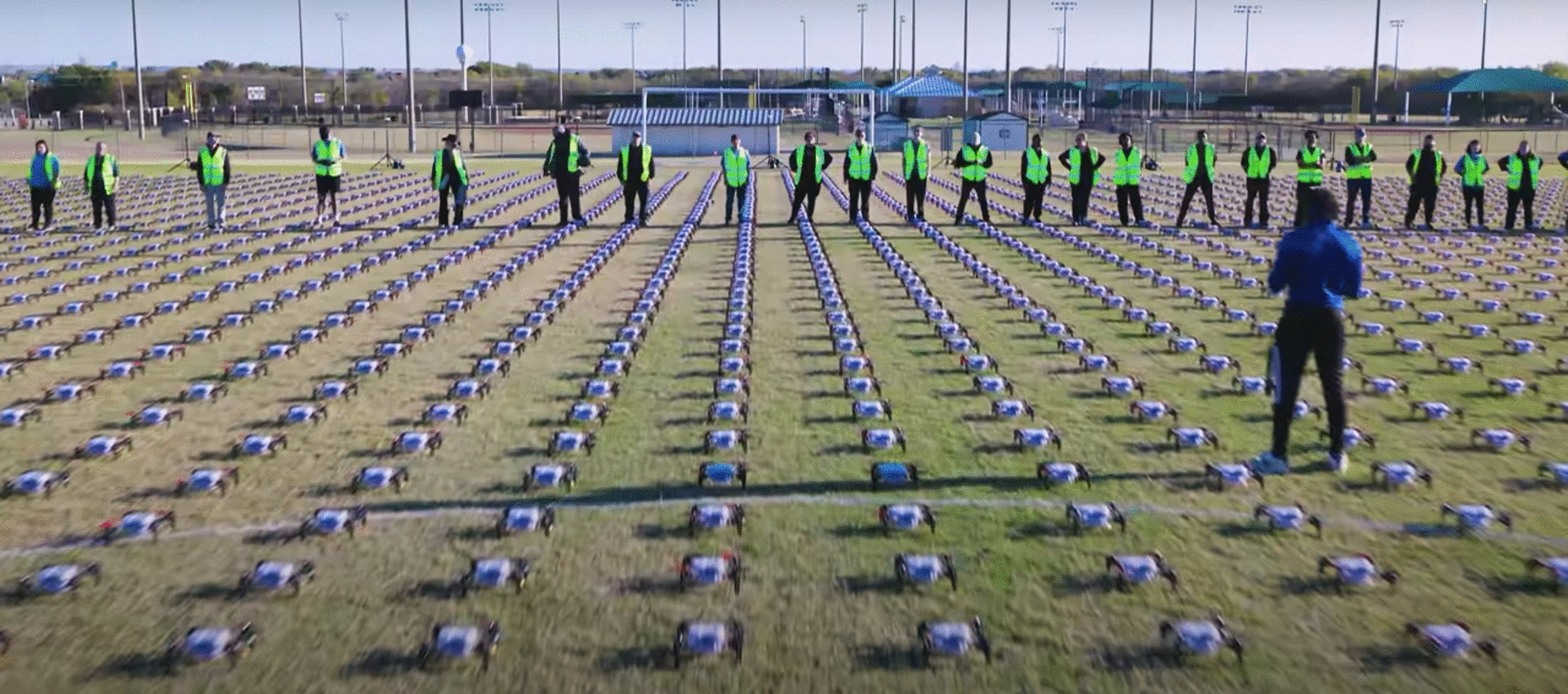
Christmas show by the Texan company Sky Elements, which in December 2024 broke a Guinness World Record in the USA by flying a swarm of 5,000 drones. Images: Sky Elements
As they do not have a human pilot on board (although they can be controlled remotely, the so-called RPAS, or fly autonomously) they are suitable for a wide variety of hazardous tasks, not only in the military field, where they began to be developed, but also in civilian sphere, such as contaminated environments, high-altitude installations or places inaccessible to conventional aircraft. They are also very useful in emergencies and catastrophes, for search, rescue works, emergency delivery of medical supplies, food, etc.
Due to their lower cost, manoeuvrability and ease of use, they are also used in cartography, aerial photography and filming. Also used in environmental surveillance and monitoring, infrastructure inspection, construction control and mining, as well as in precision agriculture and phytosanitary treatments, among other fields.
Apart from their traditional use in aeromodelling, other applications of drones that demonstrate their growing popularity are in the world of entertainment. Light shows with large swarms of drones are increasingly replacing traditional fireworks, even at indoor events. In 2018, for example, fashion brand Dolce & Gabbana used them on the Milan Fashion Week, instead of human models, to showcase its handbag collection. Beyond the anecdote, cargo transport is, together with passenger transport (initially piloted, of course) the other major pillar of future innovative air mobility.
03
¿Do cities dream of electric aircraft?

The European Aviation Safety Agency, EASA, describes a vertiport as "an area of land, water, or structure used or intended to be used for the landing and take-off of VTOL aircraft. Also it adds that "vertiports need to be easily accessible, with good connecting services to streets, railway stations, buses, etc. They can be either at street level or on top of buildings".
NASA explains that they are infrastructures that "require less space than an airport" and will make it possible to reach parts of the city "that were not accessible to a helicopter". Furthermore, it foresees that "the density of operations will be such" that they will require automated systems to function.
Determining what they will look like, where they will be located, what operational safety requirements they must meet and how to achieve economic and financial viability are, among others, some of the keys to making the new system a real urban transport alternative. All of them, and many more, are addressed in the Vertiports White Paper.
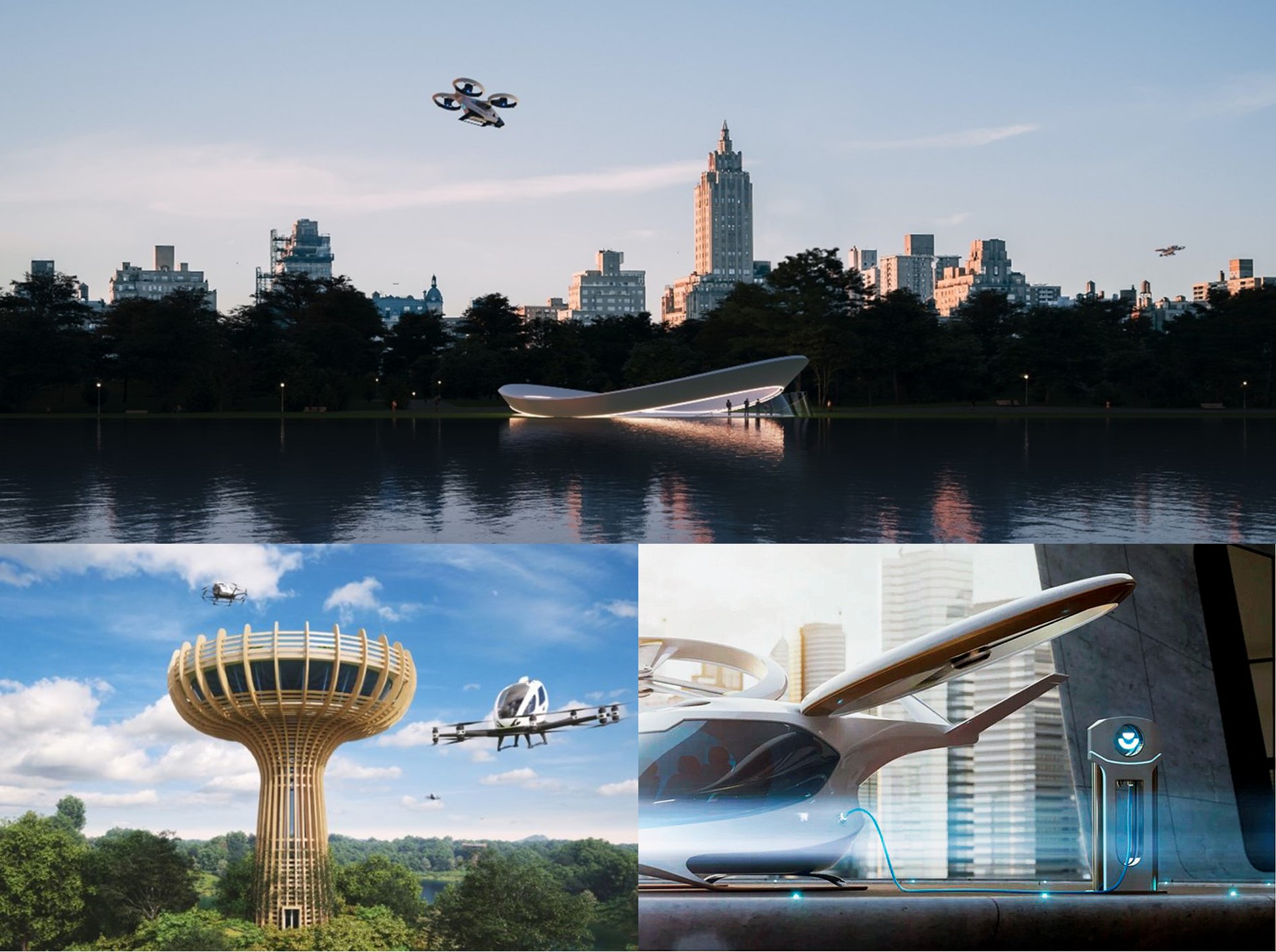
The advantages over conventional airports and heliports lie mainly in the fact that they will not require long runways or large spaces. Moreover, they can be located in a wide variety of locations and configurations, from high-rise locations, such as a rooftop, to floating or mobile installations. From intermodal urban hubs (we could be talking about the "vertiport of Atocha" or Sagrera, for example) to small stops with minimal recharging facilities or "vertistops".
Around the world, regulatory bodies such as EASA in the European Union, the CAA (Civil Aviation Authority) in the United Kingdom, the FAA (Federal Aviation Authority) in the United States, CASA in Australia, the DGCA in the United Arab Emirates, or AESA in Spain, have already published the first drafts of regulations on the design of vertiports. However, these are preliminary documents, which in their further development will also have to take into account the reorganisation of airspace to accommodate different types of drones (U-Space), on which work is also underway.
04
Five reasons (and five challenges) to give the green light to the vertiports
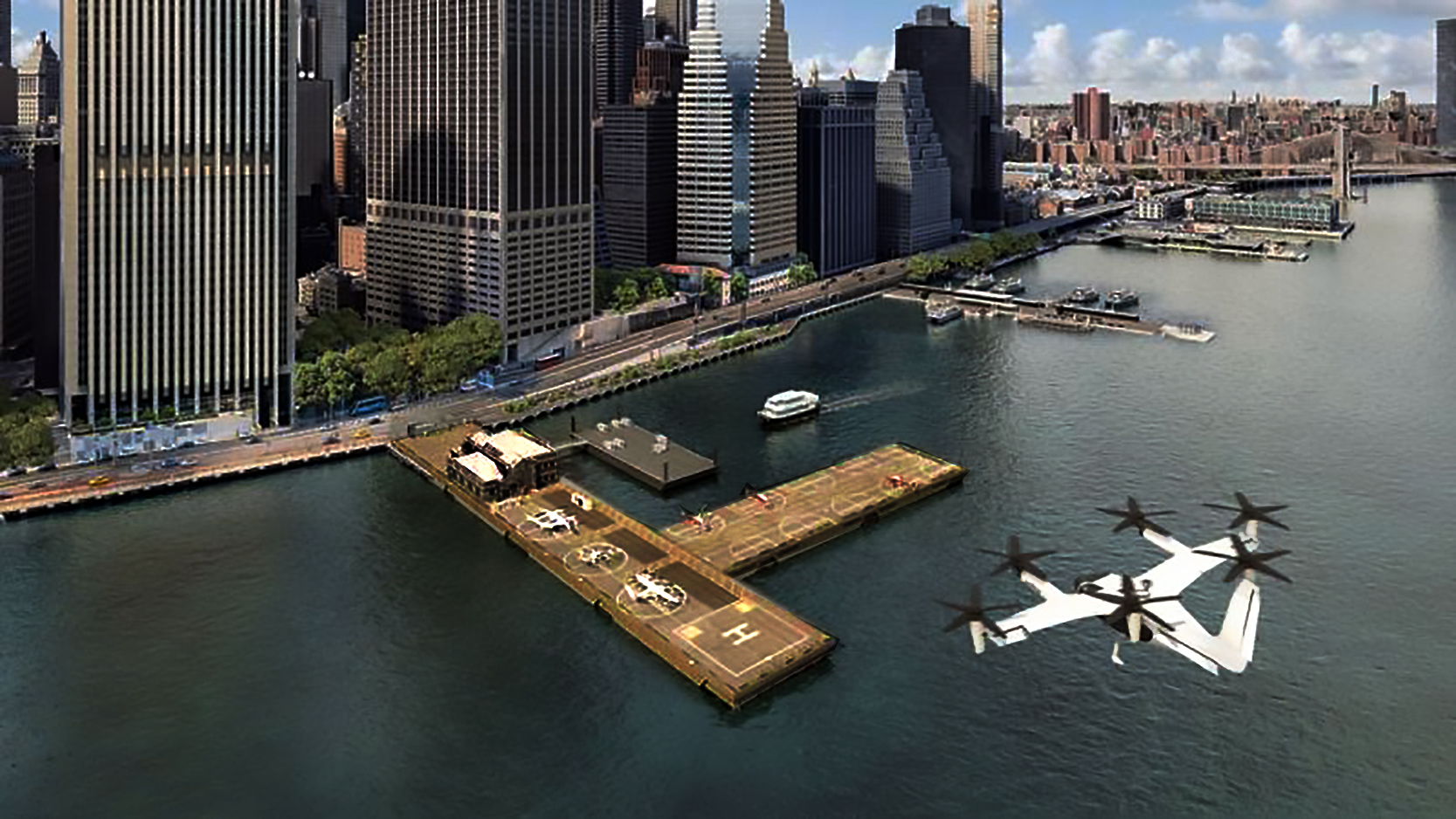
Although projects are being announced all over the world, including Spain, for the construction of vertiports, and many expectations have been generated, the truth is that the novelty of the sector means that there are many uncertainties. Why, then, face the many challenges that lie ahead? After more than a year, four meetings with the main actors in the sector and the launch of the White Paper, some compelling reasons can be listed which open up a whole range of opportunities:
1.- Because they can alleviate urban traffic: in the near future, cities will continue to grow and with them congestion. The new air mobility will not replace, but rather add to and connect with existing land-based public transport networks: bus, metro, tram, suburban train, etc. The transport offer will increase with a new efficient, fast and sustainable solution for passengers, emergencies and logistics, facilitating "last mile" deliveries.
They will also save lives, as they will be able to transport patients and medical staff, deliver medicines, organs for transplantation or supplies, assist in fires and disasters, etc. And not only in cities: the new air mobility will bring connectivity and better services to inter-urban areas and rural, remote or hard-to-reach areas. Pilot projects such as the one developed by Correos in Spain, with drones designed to carry parcels weighing up to five kilograms over difficult routes, are proving this.
...and a challenge: one of the critical points for vertiports to thrive is to choose the most suitable location. This will require balancing a variety of factors, such as high demand density, proximity to transport hubs, such as airports, stations or logistics zones, implementation costs, regulatory constraints and speed of deployment.
The global city
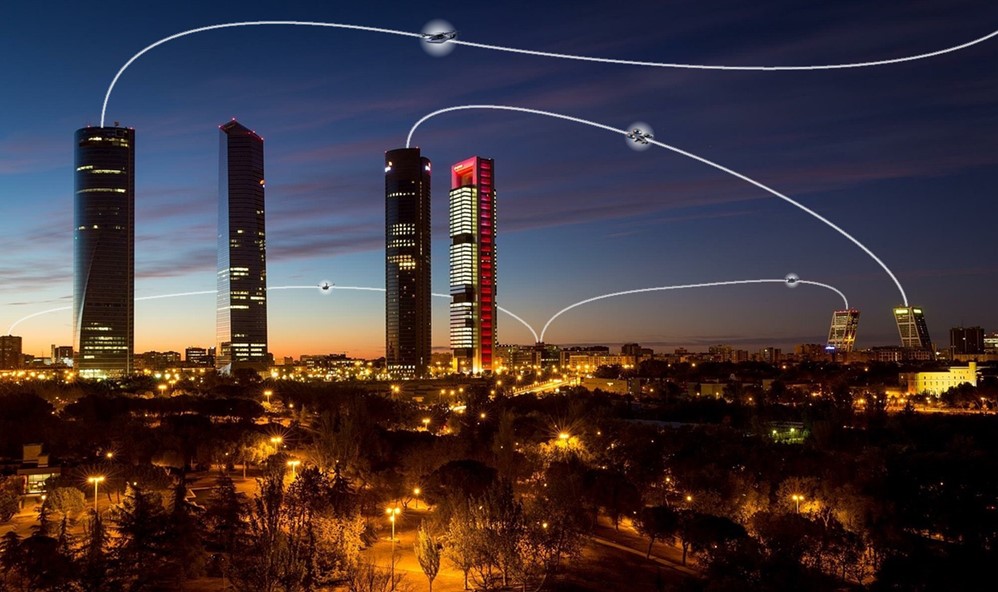
Photo: Ineco
More and more of the world's inhabitants live in cities, according to the United Nations. Urban population growth accelerated from 1950 onwards, from 751 million people to 4.2 billion in 2018, now accounting for 55% of the total. And, overall, the trend is set to continue between now and 2050, when it is expected to reach 68%.
At the same time, 3.1 billion people will continue to live in rural areas. The UN therefore calls on governments to "undertake policies that improve the quality of life of both urban and rural dwellers, while strengthening the links between them", paying attention to the needs of citizens in terms of housing, education and health, employment or transport.
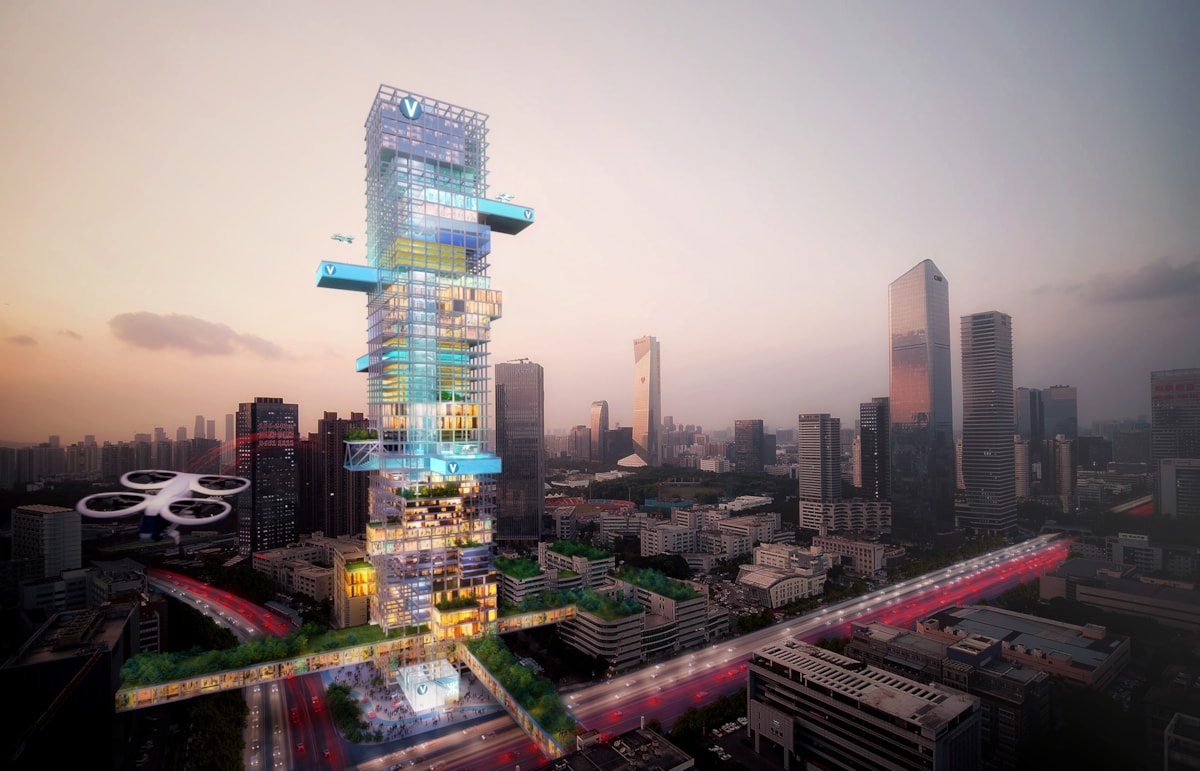
2.-Because society is ready: social acceptance is key to the development of a new mobility system.
And so far everything points to a favourable reception: in August 2021 EASA conducted an extensive survey asking 3,600 citizens in six major European cities (including Barcelona in Spain) their opinion on urban air mobility.
83% showed a positive attitude; 49% said they were willing to try an air taxi, and around 50% had a good opinion of the reduction in traffic and local emissions it would bring.
...and a challenge: The EASA study also revealed that most citizens are concerned about safety, privacy and noise, as well as the costs associated with this new type of travel.
We do not have to convince the public of the desirability of air transport, because the public wants fast transport. All that is needed is to provide safe transport at low cost (...) The future of aviation is not to sell thrills to the public, but to transport people and goods from one place to another in the service of industry. Henry Ford, "Today and tomorrow", 1926

3-Because drones have come to stay: aircraft (cargo drones and passenger air taxis) already exist, have been tested and work. But in order to be used in urban transport they need specific, well-designed and strategically located infrastructure.
...and a challenge: For cities, a new concept of urban space is emerging, this time in vertical space. we will have to "being up high". This is a qualitative leap forward that will have a direct impact on the conception and design of the vertiports.
4.-Because they are good business, for the economy and for the planet: as a newly created sector, they will boost innovation and act as a catalyst for economic activity by making new services possible, which will generate wealth and create thousands of new direct and indirect jobs.
ICAO, for example, estimates that by 2050 the vertiports market will generate $40 billion. On the other hand, the European Commission estimated in 2022 that by 2030, the drone services market could reach €14.5 billion and generate 145,000 jobs.
It is essential to highlight the role of vertiports as drivers of economic activity (...) they have the potential to boost key sectors such as technology, construction, logistics and tourism, generating skilled jobs and fostering technological innovation. Vertiports White Paper, SIAM, 2025
From an environmental point of view, vertiports will make possible a new form of sustainable mobility, since, by definition, they will be high-rise infrastructures that will consume little urban space. In addition, the aircraft using them will obtain electricity from renewable sources (solar, hydrogen, etc.), which eliminate or minimise pollutant emissions and noise.
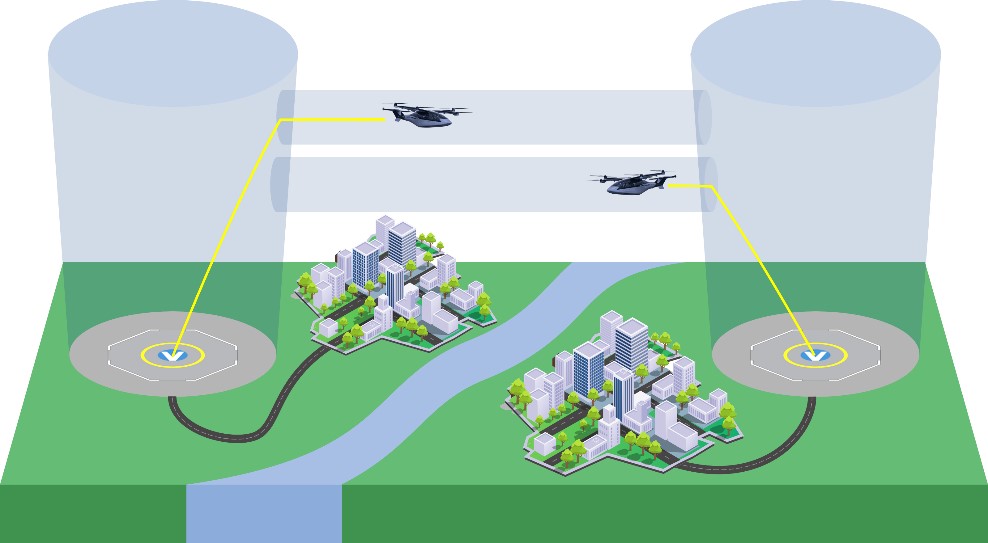
...and a challenge: new sector, new legislation. A complex task, involving multiple actors, but absolutely essential. And it requires agility and flexibility both to develop it and to adapt it to the fast-moving stream of technological development of the sector.
On the one hand, aeronautical authorities around the world have been working for some years on a legal and technical framework, both to certify and regulate the authorisations of aircraft, pilots and operations, as well as future vertiports, and on the organisation and structuring of the airspace reserved for drones (U-Space), and to ensure their compatibility with conventional aviation. To this end, it is proposed to stratify it, reserving altitudes below 1000 feet (300 metres) for VCAs. At the same time, cities will have to integrate landfills into their urban planning and regulations.
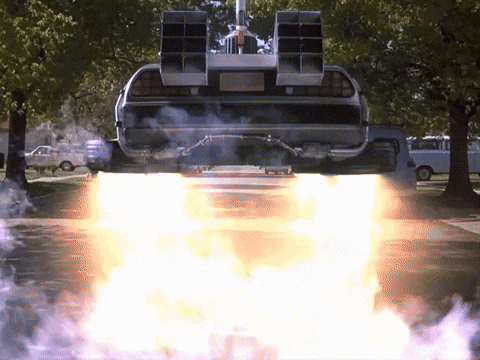
5. Because it can be done: the advances and knowledge accumulated after a century of aviation (in 60 years we went from the Wright brothers' first flight to putting the first human being, the Russian Yuri Gagarin, into orbit), supported by the tools of the digital era such as AI, provide sufficient bases to design both vertiports adapted to the requirements of a new type of aircraft, and the necessary regulations for them to operate safely.
...and a challenge: the many uncertainties and the complexity of entering into a completely new activity, which requires a large number of players to come to an agreement within a still immature regulatory framework.


